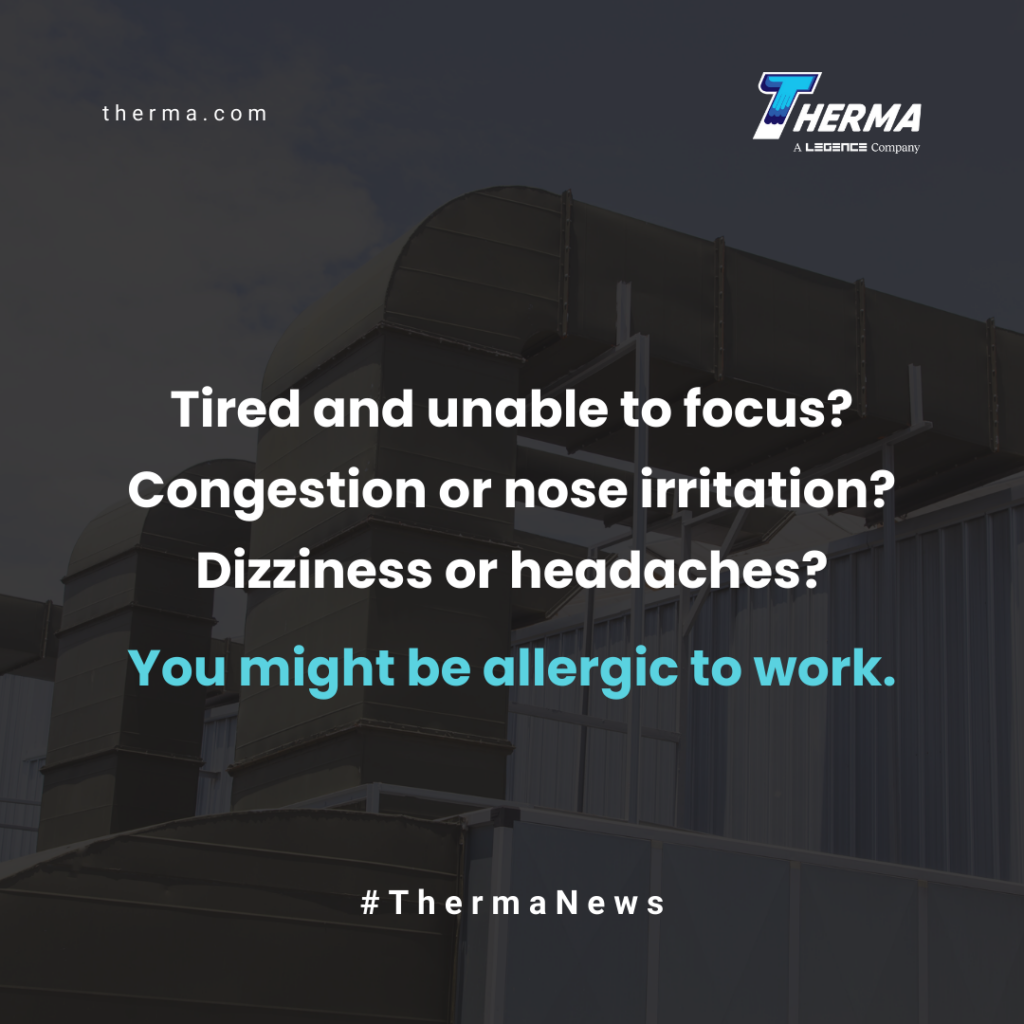by Patti Dees
Without knowing what sick building syndrome (SBS) is, managers and owners may be tempted to dismiss occupant complaints. Symptoms mimic common ailments such as allergies, common colds, and flu. However, the impact of SBS on occupants and staff hits productivity and can lead to absenteeism. Prevention requires the identification of potential causes and taking steps to control them.
What is Sick Building Syndrome?
SBS is a generalized term for a broad spectrum of symptoms experienced by many of the building’s occupants that are relieved or diminished when they are not in the building. A separate term, building-related illness, applies if the symptoms can be linked to a specific diagnosis, such as Legionnaires disease. Symptoms can include:
- lethargy, fatigue, difficulty concentrating
- headache, dizziness, congestion
- irritation of the nose, eyes, throat
Several factors, sometimes singly or in combination, can be linked to SBS. The most common causes are ventilation issues and contaminant exposure, both of which contribute to poor indoor air quality (IAQ).
Ventilation Issues
A range of scenarios can lead to poor ventilation: poor design or installation practices, delayed maintenance, and even remodeling of an occupied area.

Contaminants
Contaminant sources can be inside or outside the building. Examples of indoor sources include copiers, dust on heating elements, and food in break area garbage bins. Outdoor sources may be pollen, fumes from nearby manufacturers and businesses, smoke from a fire, or other combustion byproducts. Even a small amount of contamination can cause SBS symptoms.
However, other environmental factors may also play a role. Examples include lighting, noise, and electromagnetic radiation. Flickering or inadequate lighting can contribute to occupant complaints of headache, fatigue or lethargy, and difficulty concentrating. Excessive or persistent noise can lead to similar complaints.
Solving the Puzzle
Because SBS presents with common symptoms, addressing complaints requires investigators to gather information, and form and test a hypothesis. Once the source of the problem is identified, a plan of action can be developed to alleviate current issues and prevent similar problems in the future.
Reviewing the building history, maintenance records, and documentation on related complaints is followed by a visual inspection of the impacted areas. Basic measurements such as temperature, humidity, noise, or light levels may be useful. However, testing for specific contaminants is typically unwarranted.
Using details from the initial investigation, team members should form a hypothesis and develop a plan to test it. With the cause identified, exposure should be reduced or eliminated. Steps to prevent future issues should also be taken. For example, if the investigation determines mold in crawl spaces is entering ductwork and distributed throughout the building via the HVAC ventilation system, actions should include removing mold, taking steps to keep mold at bay in the future, changing filters, as well as cleaning and repairing the ductwork.
Targeting IAQ For Prevention
A proactive approach to prevent SBS should focus on improving and maintaining healthy IAQ. HVAC standards and building codes include minimum airflow rates to circulate fresh air, displacing stale or potentially contaminated air in occupied areas. A good ventilation design provides an optimal path to circulate fresh air. Meanwhile, preventative or predictive maintenance on commercial HVAC systems ensures the system’s equipment is in good operational order and reduces opportunities for contaminant exposure.
However, IAQ requires more than starting with a good design and efficient equipment. Ventilation systems are designed to produce specific airflow patterns. If a space has been remodeled, the new patterns may be less effective, essentially canceling out positive gains from even the best maintenance plan. If changes are, or have been, made then the ventilation system may need to be redesigned.
Beyond maintenance, there are other steps that can help:
- Whenever possible, keep contaminant sources out of occupied areas
- Reduce the ability of contaminants to enter the ventilation system. This can include sealing ductwork and the building envelope or using a separate system for areas housing contaminant sources.
- Maintain humidity and temperature within a comfortable range. Avoiding extremes can reduce biocontaminant growth and reduce physical irritation complaints.
- Improve natural lighting and protect occupants from noise pollution.
If SBS is a concern, reach out to professionals at Therma to develop a plan. Their HVAC experience spans from initial system design to maintenance and can help improve and maintain your building’s IAQ.
Patti draws on her background as a chemical engineer to share information with readers on technology, manufacturing, and construction.
Sources
National Library of Medicine – The sick building syndrome – PMC
US Environmental Protection Agency – Indoor Air Pollution: An Introduction for Health Professionals | US EPA
US Environmental Protection Agency – Indoor Air Facts No. 4 (revised) Sick Building Syndrome







